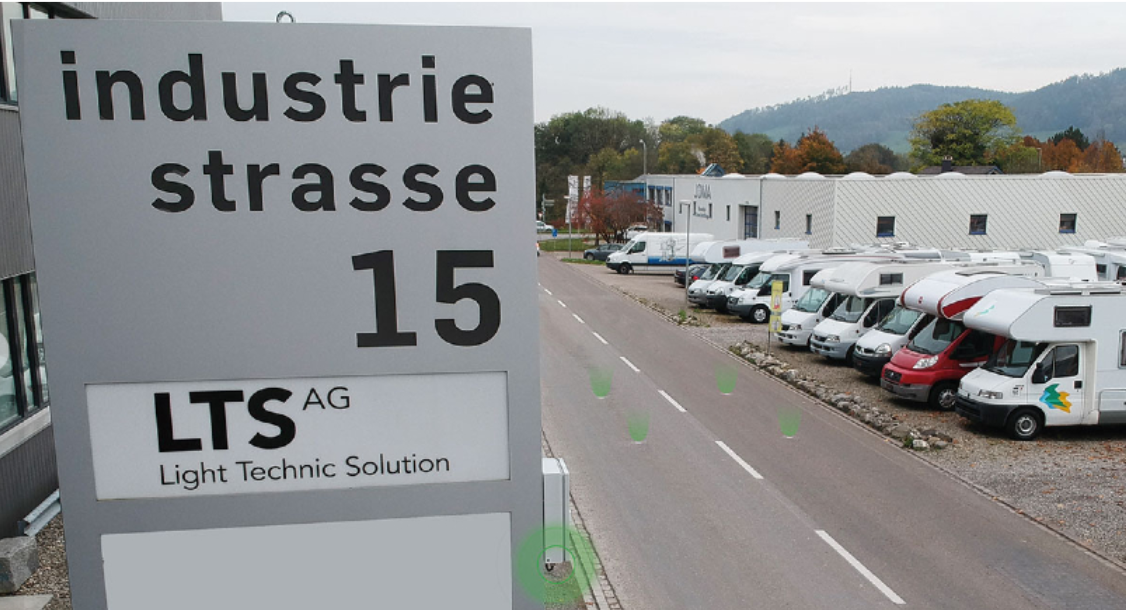What technology is in the parking sensor?
We at LTS AG have a ground sensor which detects vehicles electromagnetically. As a result, it has a minimum detection level of 99 percent. Thus, our parking lot sensor works extremely reliably. This is made possible by the advanced and proprietary algorithms that go into the sensors.
A parking lot sensor works not only with one sensor technology, but with several. They detect whether there are vehicles in the immediate vicinity of the sensor. The signal is then passed on to the TAPS gateway via a proprietary radio protocol. From there, they are passed on to the customer's infrastructure. This can be a server or the cloud. The customer can then process the data as they wish.
The TAPS parking sensor is unique

Thanks to an innovative energy concept, our ground sensors are completely energy self-sufficient. Batteries or an external power supply are not necessary. That's why the ground sensors can also be installed very easily. The entire process only takes about 30 minutes. The parking sensors charge during operation.
The various sensor technologies in the parking sensors need smart systems to support them. And every smart system needs an update from time to time. This is no problem for our parking sensors. The update takes place wirelessly thanks to OTA (Update Over the Air). This also makes the sensors low-maintenance.
The costs over the entire life cycle of such a ground sensor are lower than for comparable products. This is because the sensors are built in such a way that they are optimally protected against environmental influences.
What happens when the parking sensor senses a car?

The floor sensors are embedded in the pavement of each parking space. Because they have a diameter of 155 millimeters and a height of 46 millimeters, this is not a problem. The housing is made of V4A/safety glass. Each parking sensor is IP67 compliant, i.e. resistant to all weather conditions. In the temperature range of minus 25 to plus 65 degrees Celsius, the parking sensors function perfectly.
When a sensor senses a vehicle, the following happens:
The electromagnetic detection of the ground sensor relays the signal in real time via a proprietary radio protocol.
The signal arrives at the TAPS gateway.
The received data is forwarded. Numerous different interfaces can be used for this purpose.
Parking lot sensors make St. Gallen smart
St. Gallen was 2018 as the first city in German-speaking Switzerland with intelligent parking spaces present in the media. What had happened? The first parking sensors were tested in St. Gallen. The goal: There should be no more search traffic in St. Gallen. Because the city administration realized that the search for parking spaces was to blame for up to 50 percent of traffic jams. Active parking spaces and parking fees were to be actively managed in the future. In addition, energy consumption and air pollution were to be reduced. Drivers should be able to easily locate free parking spaces via a guidance system.
The problem with the first sensors, however, was that they did not consistently work correctly. Four different parking lot sensors from two Swiss manufacturers as well as a German and a New Zealand company were used. None of the sensors achieved the reliability of the ground sensors from LTS AG.
The snow in particular caused problems for the sensors. They still functioned reliably with little snow, but no longer with greater snow depths. The sensors in the test had magnetic, infrared and ultrasonic technologies as well as light detectors. Batteries were installed in them.
Parking lot sensors replace older technologies

Today, we use our ground sensors not only in outdoor parking lots. They also replace induction loops in other situations and allow dynamic traffic routing far beyond parking management.
Who via sensors the Traffic load can direct traffic intelligently. In the canton of Zurich, for example, the Traffic data freely accessible. Parking garages and parking decks are equipped with sensors, as are no-parking zones for monitoring, and they are even used for adaptive construction site switchgear.




)
)